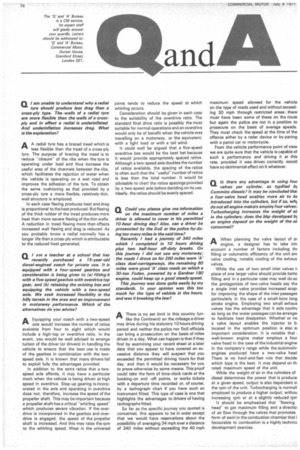I am unable to understand why a radial tyre should
Page 78

If you've noticed an error in this article please click here to report it so we can fix it.
produce less drag than a cross-ply type. The .walls of a radial tyre are more flexible than the walls of a crossply and in effect a radial is underinflated. And underinflation increases drag. What is the explanation?
AA radial tyre has a braced tread which is
less flexible than the tread of a cross-ply tyre. The purpose of bracing the tread is to reduce "closure" of the ribs when the tyre is operating under load and thus increase the useful area of the channels between the ribs. which facilitates the rejection of water when the vehicle is operating on a wet road and improves the adhesion of the tyre. To obtain the same cushioning as that provided by a cross-ply tyre a more flexible, relatively-thin, wall structure is employed.
In each case flexing produces heat and drag is proportional to the heat produced. Butflexing of the thick rubber of the tread produces more heat than more severe flexing of the thin walls. A reduction in tread flexing more than offsets increased wall flexing and drag is reduced. As you probably know a radial normally has a longer life than a cross-ply which is attributable to the reduced heat generated.












































































































































